We’re about to unravel the secrets of substituting sourdough starter for commercial yeast in your beloved bread and quick bread recipes. Whether it’s classic sourdough loaves, hearty whole wheat creations, or even a surprising twist like sourdough banana bread or brownies, we’ve got you covered. The best part? It’s a simple process that requires just a few simple ingredients, a dash of patience, and a warm place for fermentation.
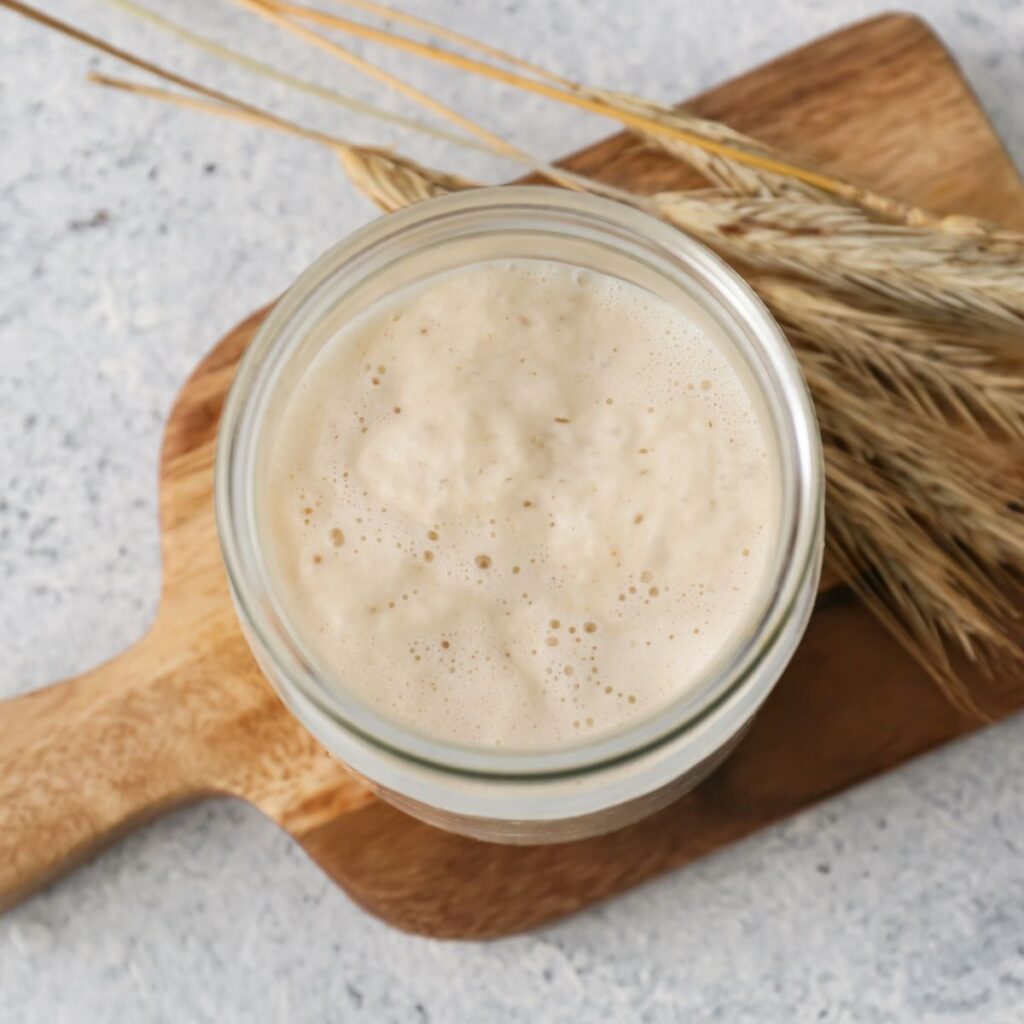
Table Of Contents
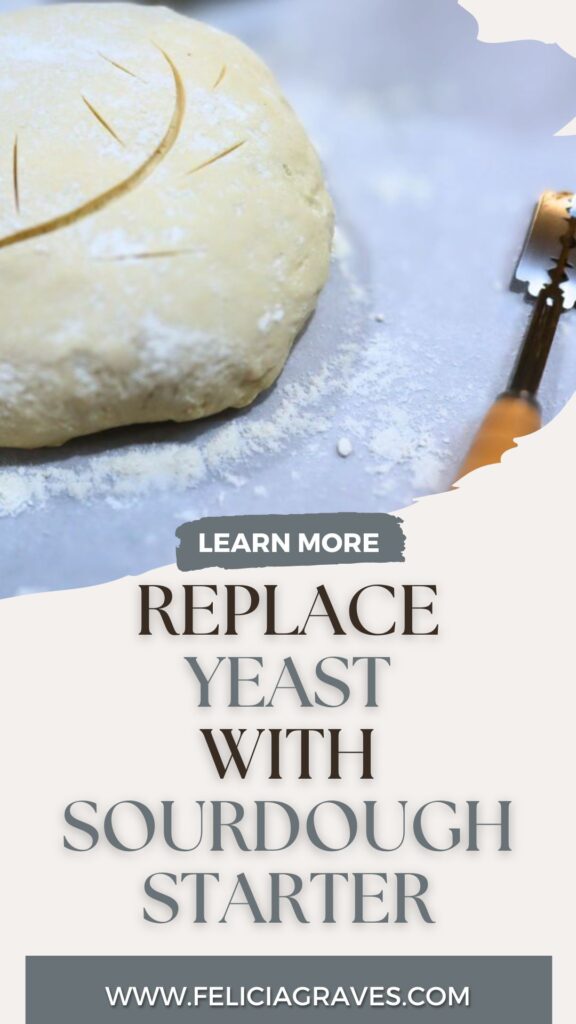
What Is A Sourdough Starter?
A sourdough starter is a living mixture of flour and water, teeming with wild yeast and lactic acid bacteria. Unlike store-bought yeast, which is a one-time leavening agent, a sourdough starter can be perpetually maintained at room temperature, making it an invaluable component in various sourdough bread recipes. When it comes to working as a leavening agent, sourdough starter acts through a fermentation process driven by these natural yeasts and bacteria.
In a sourdough recipe, a typical proportion is equal parts of flour and water by weight, usually expressed in grams. For example, you might mix 100 grams of flour with 100 grams of water to create a sourdough starter. Over time, this mixture ferments, producing bubbles and a characteristic sour smell. The wild bacteria present in the starter metabolize the flour, producing organic acids such as acetic acid, which contribute to both flavor and leavening.
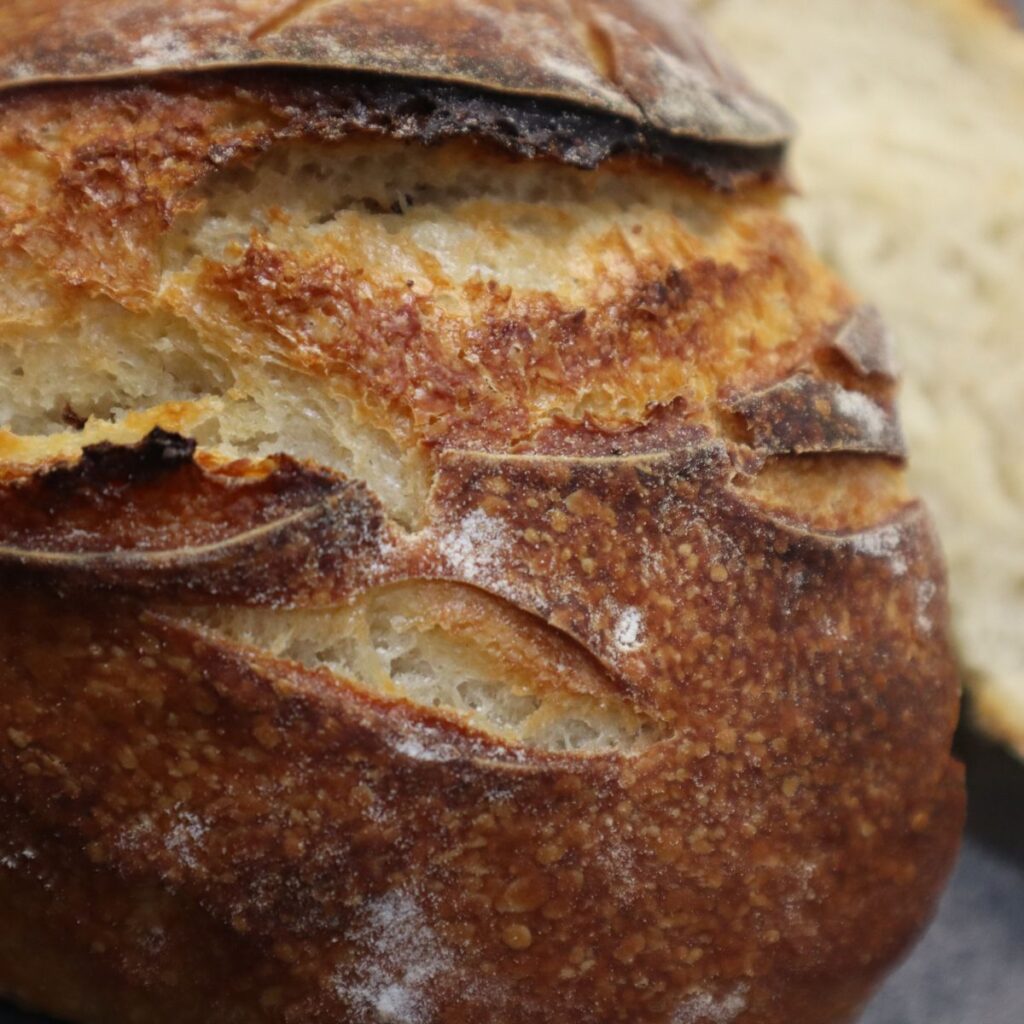
Why Would You Use Sourdough Instead Of Yeast?
The benefits of using sourdough over commercial yeast are numerous. Firstly, sourdough bread recipes often involve a longer rise time, allowing for more complex flavors to develop. This results in a final product with a richer taste profile, one that’s distinctive and delightful. Additionally, sourdough boasts improved digestibility due to the fermentation process breaking down some of the dough’s gluten and phytic acid content. Moreover, homemade bread with a sourdough starter showcases consistent results and a stronger sourdough flavor, making it a favorite choice among avid sourdough bakers. The simple process, using just flour, water, and time, makes it an accessible option for all. So, whether you’re a seasoned sourdough enthusiast or a novice, embracing your own sourdough starter in place of store-bought yeast is the first step towards baking delicious, homemade sourdough bread with that irresistible sourdough version that sets your bread apart. The good news is that creating your easy sourdough starter requires simple ingredients, simple steps, and a little patience.
How To Substitute Sourdough Starter For Yeast
Understanding the Sourdough Starter-to-Yeast Conversion Ratio
The first step in this process is to examine the hydration levels of both your sourdough starter and the original yeast recipe. Sourdough starters can vary in hydration, but a common ratio is equal parts of flour and water by weight, typically expressed in grams. Your starter might be 100 grams of flour and 100 grams of water, creating a 100% hydration starter. Compare this to your original recipe, which often calls for a specific amount of water and flour.
Adjusting Recipes for Sourdough Starter
Once you’ve determined the hydration levels, it’s time to adjust your recipe accordingly. For recipes that require bread flour, bread recipes, and even pizza dough, you can typically substitute sourdough starter on a one-to-one basis with the yeast called for in the original recipe. In other words, if the recipe calls for 1 cup of water and 2 cups of flour with 2 teaspoons of yeast, you can replace the yeast with 1 cup of your active sourdough starter.
However, it’s important to note that sourdough breads often have longer rise times due to the natural fermentation process. So, plan for a bit of extra time in your kitchen and be patient. The sourdough culture will work its magic, creating a unique and flavorful bread.
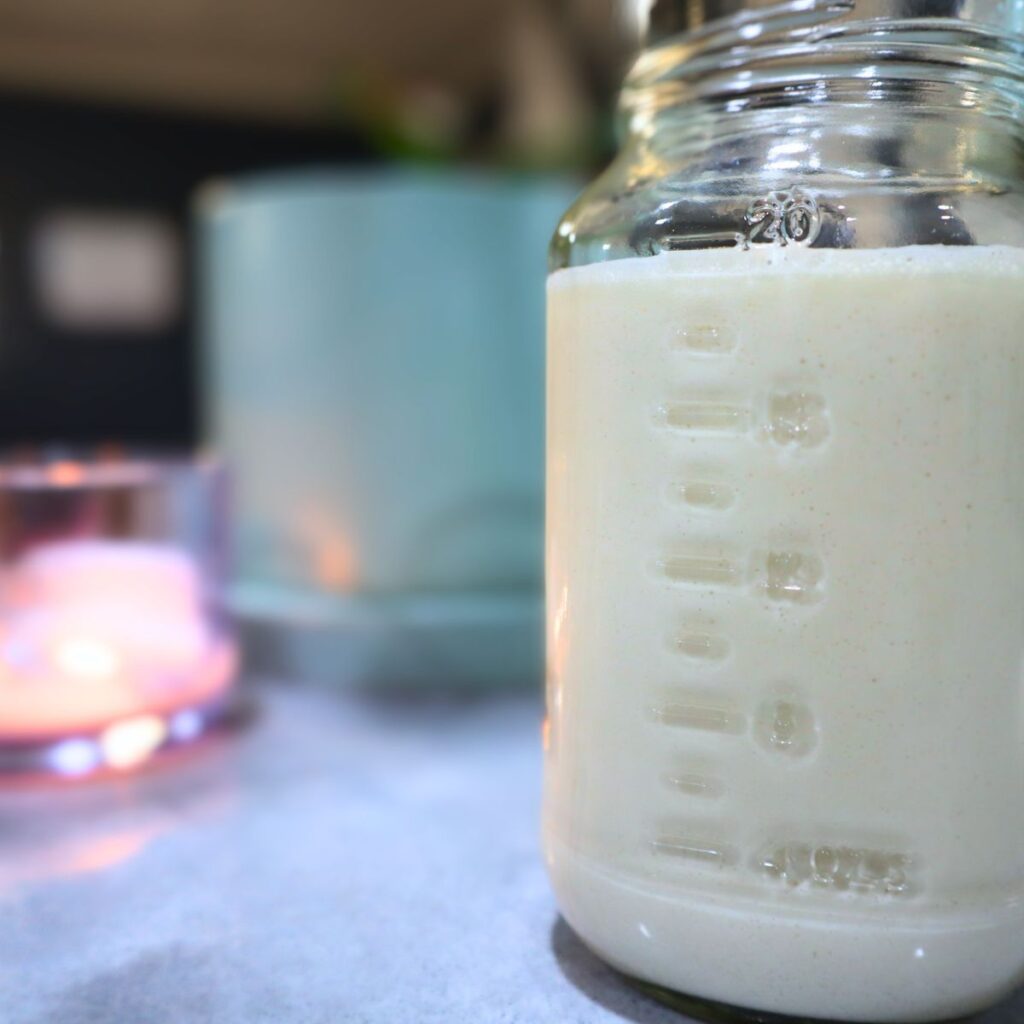
Timing and Patience – The Fermentation Process
One of the critical elements of successful sourdough baking is understanding when your dough is ready. Unlike the predictable rise times of store-bought yeast, sourdough can be a bit more unpredictable, but it’s all part of the artisanal charm.
As your dough ferments, you’ll notice it becoming more extensible and rising at least double in volume during the first rise. During the second rise, it may not rise quite as dramatically, but it should still show some expansion. Pay attention to the feel and texture of the dough; it should be airy, with a delightful sour smell. These are signs that your dough is on the right track to becoming a delicious, homemade sourdough bread.
Steps For Converting A Recipe From Using Yeast To Sourdough Starter
- Ensure your sourdough starter is active and bubbly, indicating that the wild yeast and bacteria are active and ready to leaven your dough.
- Take your favorite recipe that uses commercial yeast and identify the amount of yeast it calls for.
- For recipes using bread flour or all-purpose flour, you can often substitute sourdough starter on a one-to-one basis with the yeast called for in the original recipe. For example, if the recipe requires 2 teaspoons of yeast, replace it with 1 cup (about 240-250 grams) of active sourdough starter.
- Reduce the amount of water in your recipe slightly to account for the liquid in your sourdough starter. Subtract the amount of water equal to the weight of the starter you’re using.
- Adjust the rising times in the recipe, as sourdough typically requires longer rise times due to its natural fermentation process. Be patient and allow the dough to rise until it has doubled in volume during the first rise and shows some expansion during the second rise.
- Once your dough has gone through bulk fermentation and any additional rises as specified in your recipe, bake it as you normally would, following the temperature and timing instructions in the original recipe.
Remember that sourdough baking is a bit more of an artisanal process, and it may require some experimentation to achieve the perfect balance of flavor and texture. Over time, you’ll become more comfortable with the nuances of using sourdough starter in place of yeast, and you can adapt and refine your recipes accordingly.
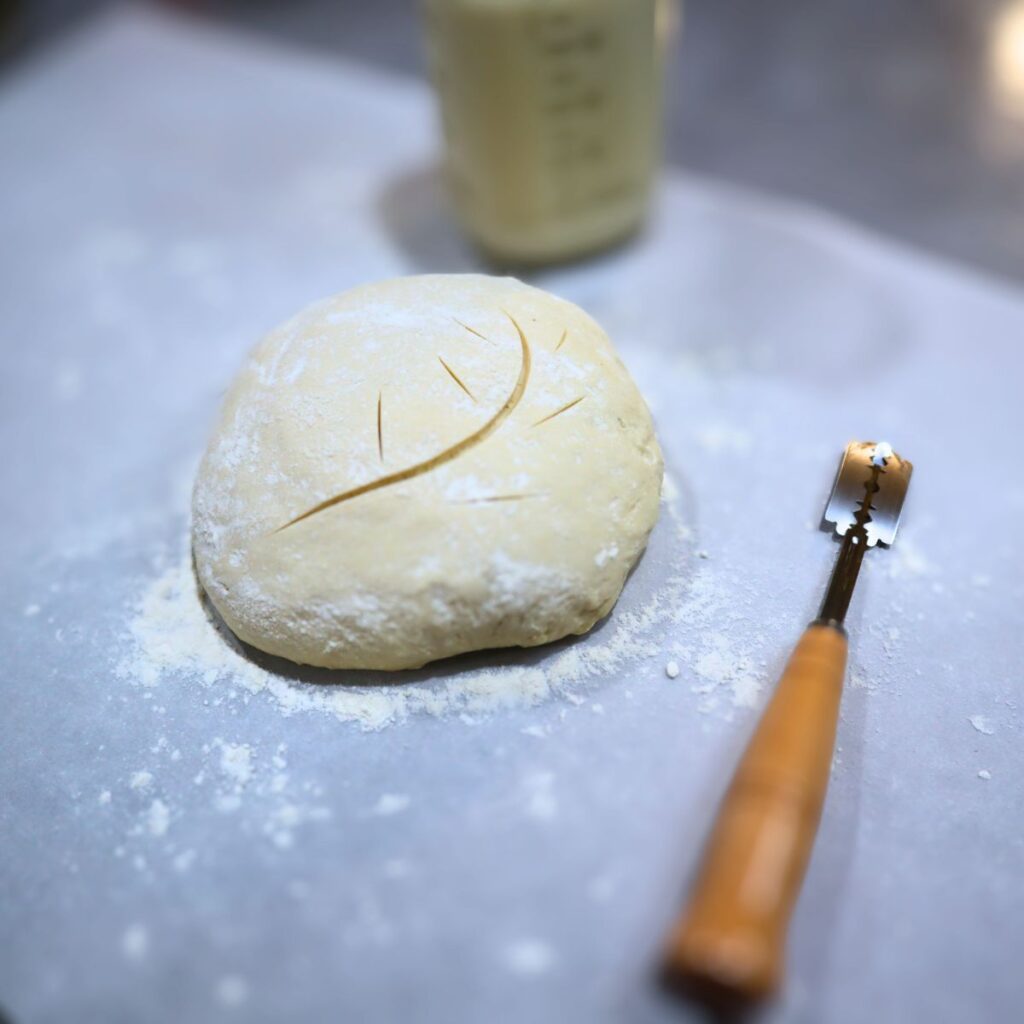
Tips For Success
Maintaining and Feeding Your Sourdough Starter
- Keep your sourdough starter in a glass or plastic container with a loose-fitting lid to allow for airflow. Avoid metal containers as they can react with the acidity of the starter.
- Store your starter at room temperature if you plan to use it frequently. If you’ll be baking less often, store it in the refrigerator. Refrigeration slows down fermentation and allows you to feed it less frequently.
- Feed your starter regularly to keep it active and healthy.
Dealing with Over-fermentation or Under-fermentation
- Over-fermentation occurs when your sourdough starter has consumed most of the available nutrients and is past its peak. Signs include a strong, sour smell, a collapsed appearance, and sluggish rising. To remedy this, reduce the amount of starter you use in your recipes or feed it more regularly to maintain a milder flavor.
- Under-fermentation happens when your starter hasn’t had enough time to fully develop and leaven the dough. You may notice a lack of rise and a mild or sweet aroma. In this case, allow your dough more time to ferment during bulk fermentation or the final proofing stage.
Adjusting for Temperature and Humidity
- Sourdough is highly influenced by environmental factors like temperature and humidity. Cooler temperatures slow down fermentation, while warmer conditions accelerate it. Adjust your rising times accordingly.
- If your kitchen is particularly cold, consider using a warmer spot or providing some gentle heat to help your sourdough rise. Conversely, in hot and humid conditions, you may need to shorten your rise times to prevent over-fermentation.
By maintaining and feeding your sourdough starter and addressing common issues like over-fermentation and adjusting for environmental conditions, you’ll become a confident and skilled sourdough baker. Remember, practice makes perfect, and each batch of sourdough bread is a learning experience.
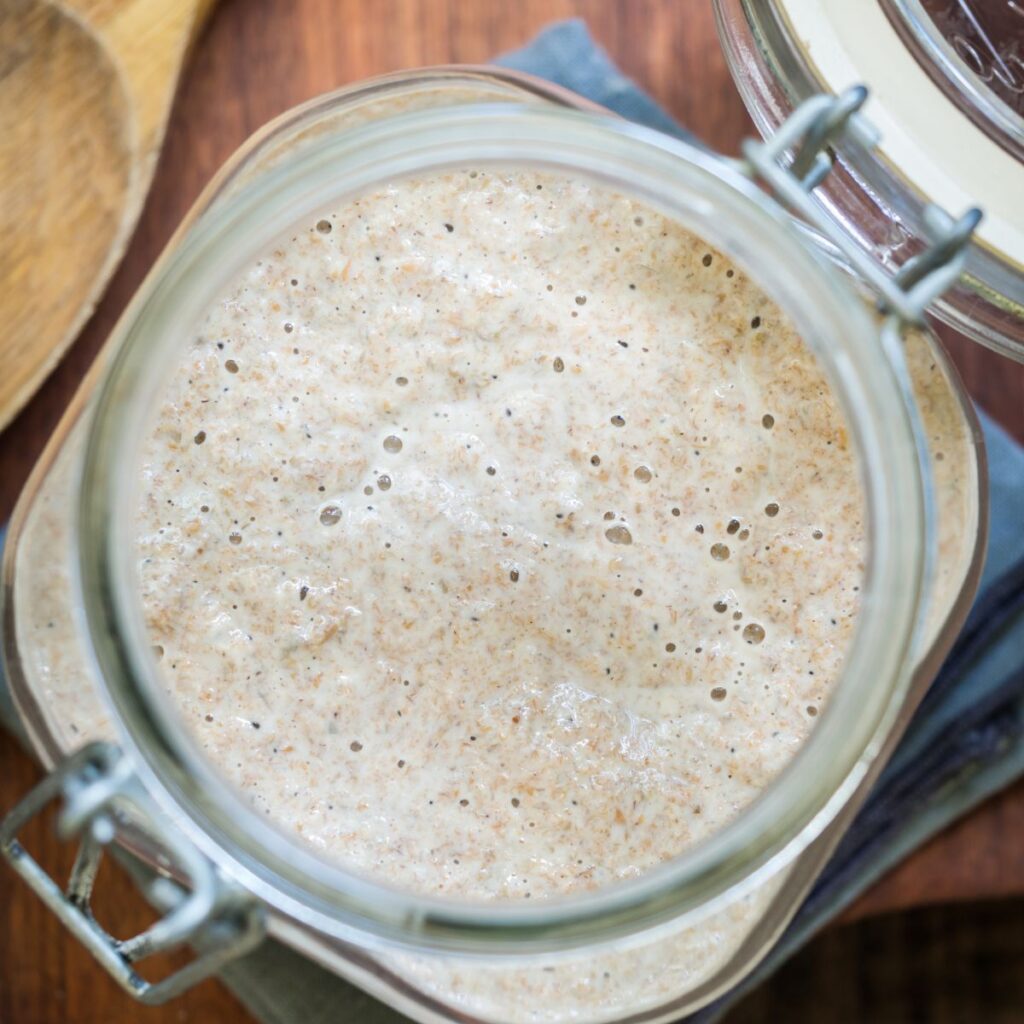
Substituting Sourdough Starter For Yeast
Recap of the Benefits of Substituting Sourdough Starter for Yeast
Incorporating sourdough starter into your recipes offers a multitude of benefits. First and foremost, it enhances the flavor of your bread and other baked goods, infusing them with a unique tang that’s both distinctive and irresistible. The long fermentation process involved in sourdough baking allows flavors to develop fully, resulting in a final product that’s richer and more complex than traditional yeasted counterparts.
Moreover, sourdough bread is renowned for its improved digestibility. The natural fermentation process breaks down gluten and phytic acid, making it a suitable option for those with mild gluten sensitivities. Sustainability is another feather in sourdough’s cap, as it reduces the need for store-bought yeast and fosters a closer connection to the baking process. So, not only does substituting sourdough starter for yeast yield tastier results, but it also offers health and environmental benefits.
Final Thoughts and Inspiration for Home Bakers
Remember that sourdough baking is both an art and a science, and perfection often comes with practice. Don’t be disheartened by occasional mishaps; they’re part of the learning process. Each loaf you bake, each batch of starter you nurture, brings you one step closer to mastering the craft.
So, whether you’re baking sourdough brownies, experimenting with whole wheat flour, or adding a sourdough twist to your favorite recipes, know that you’re not just making bread – you’re creating a tradition, a connection to generations past, and a source of nourishment for your loved ones.
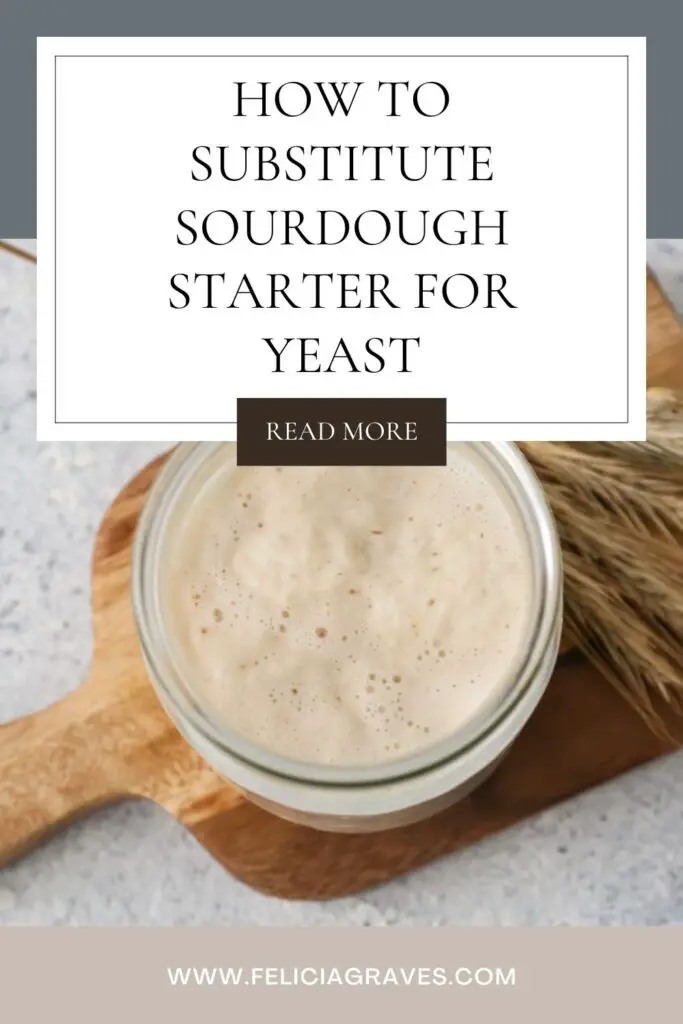
My Favorite Sourdough Recipes
EASY SOURDOUGH BREAD RECIPE (PERFECT FOR BEGINNERS)
SIMPLE SOURDOUGH PIZZA CRUST RECIPE (NO YEAST!)

Leave a Reply